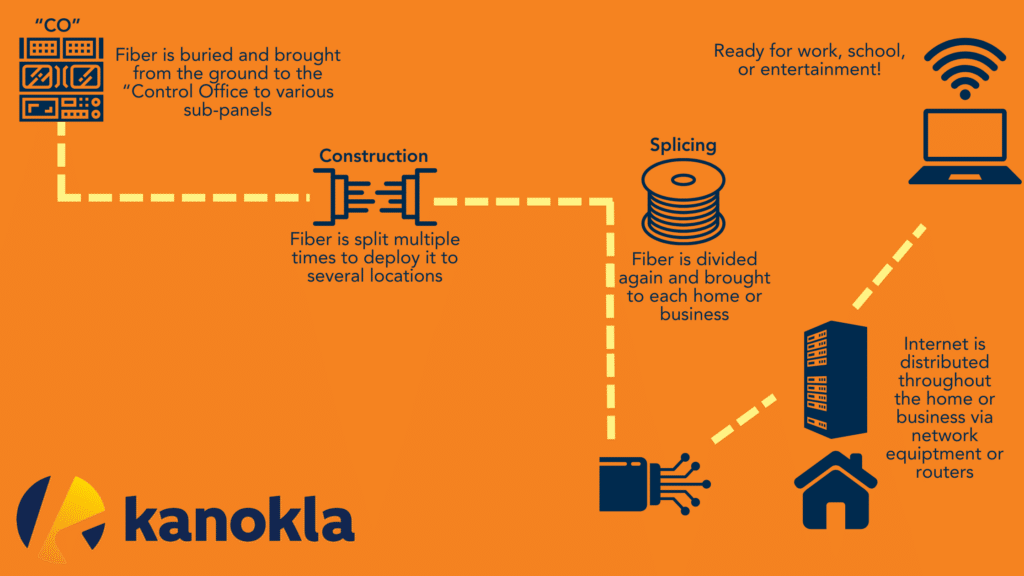How does Fiber Internet work?

Planning and Design:
We begin by assessing network requirements in the area and determining the optimal routes for fiber installation. We then work with local authorities to obtain necessary permits and permissions to ensure compliance with regulations.
Construction:
The next steps are to bore underground along the designated pathways where the fiber optic cables will be installed (streets,alleys,ect). The pathway underground must be of appropriate depth and width to accommodate the protective conduit pipes. Placing these conduits underground helps safeguard the fiber cables from environmental damage and physical stress. Once the conduits are secured, we feed the fiber optic cables through them.
Splicing:
Once the fiber is underground sections of fiber optic cables are spliced together in underground enclosures using specialized equipment. This process involves aligning and fusing the fiber strands to create a continuous, high-quality connection. After splicing is complete we will then conduct thorough testing of the cables to ensure optimal signal quality and integrity before proceeding further.
Restoration:
We then backfill with soil and compact it to stabilize the surface. Our goal is to restore the area to its original condition, or better, to minimize disruption to the surrounding environment and property.
Final Testing:
We perform final tests to measure signal strength and overall network performance. Finally, we ensure that all connections are secure and functioning as intended to deliver reliable, high-speed internet to customers.